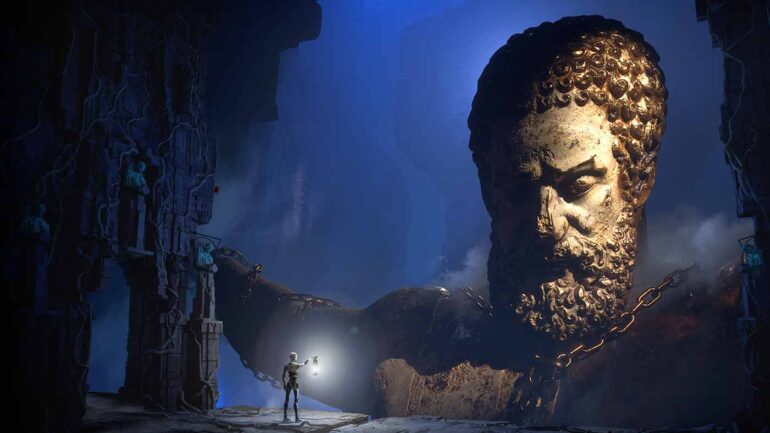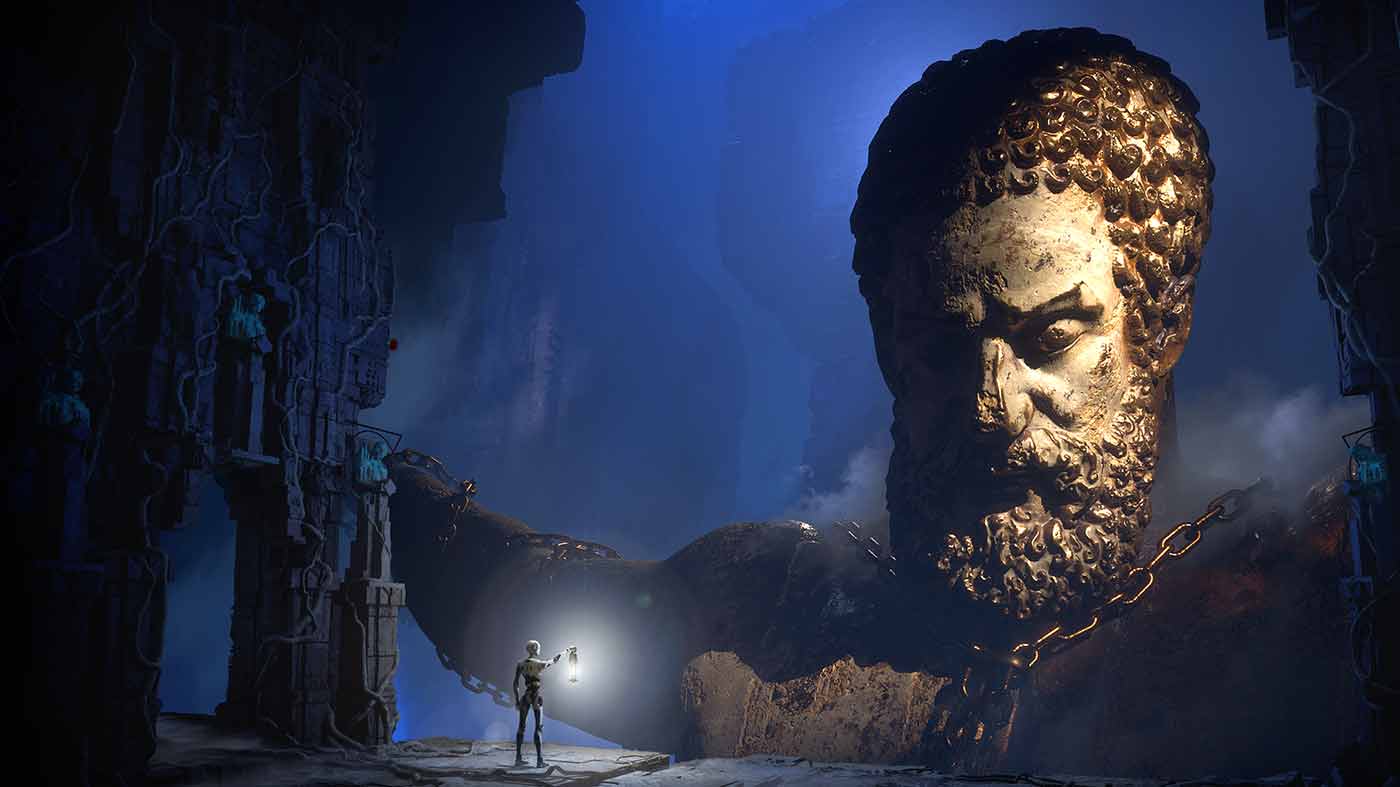Despite it being well within my wheelhouse, I never got around to playing the original Talos Principle. The game did everything it could to entice me with a stellar critical reception, a captivating concept, and even a cat on the box art, but for one reason or another I never took the leap. Returning with greater depth and grander ambition, The Talos Principle II once again combines logic-based puzzles with existential dilemmas, like the one where I ask myself why I’ve waited this long to experience Croteam’s unique take on the genre.
At the original’s close, our android protagonist had ascended the simulation testing grounds and entered the real world, one devoid of humanity following a cataclysmic virus that devastated the global population. Heralded as a messiah, this first-born android, known as Athena, set about waking hundreds more of her kind from dreams of tetrominoes and disembodied philosophising. Building the city of New Jerusalem and instituting a semi-religious doctrine known as The Goal, this budding civilisation was to grow to exactly one thousand denizens.
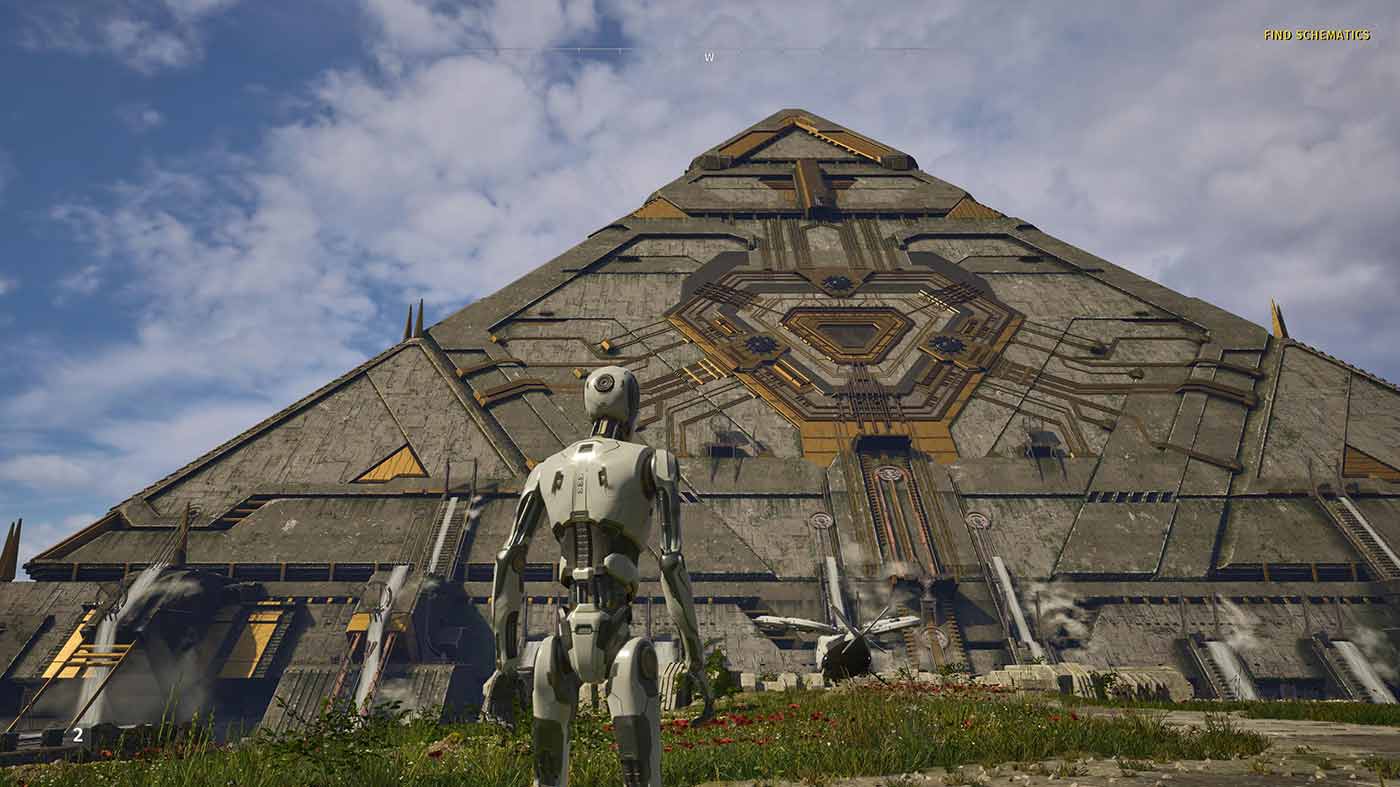
Decades later, following a brief introduction in the simulation, you open your eyes as the one-thousandth android, very humanly nicknamed 1K. While the completion of The Goal is reason for celebration, the festivities are interrupted by a spectral entity who beckons you to a mysterious island away from the safety of your domed city. Accepting the call to adventure with a small band of androids with varying ideals and aspirations, you discover a pyramid-shaped megastructure, many mortal quandaries and a mountain of puzzles waiting to be solved.
In most other puzzlers, all of this would amount to impressive set dressing, a backdrop to compliment the gameplay focal point, but here, the mortality-challenging narrative walks side by side with the mechanical actions. Over the course of the nearly thirty-hour campaign, which will vary depending on your propensity to puzzles, I was met with philosophical questions that I didn’t specifically have answers for. Surprisingly extensive conversation options add weight to every interaction with your team, as well as the inhabitants of the island, resulting in confronting commentary on the cyclical nature of time, determinism, and personal autonomy to name but a few.
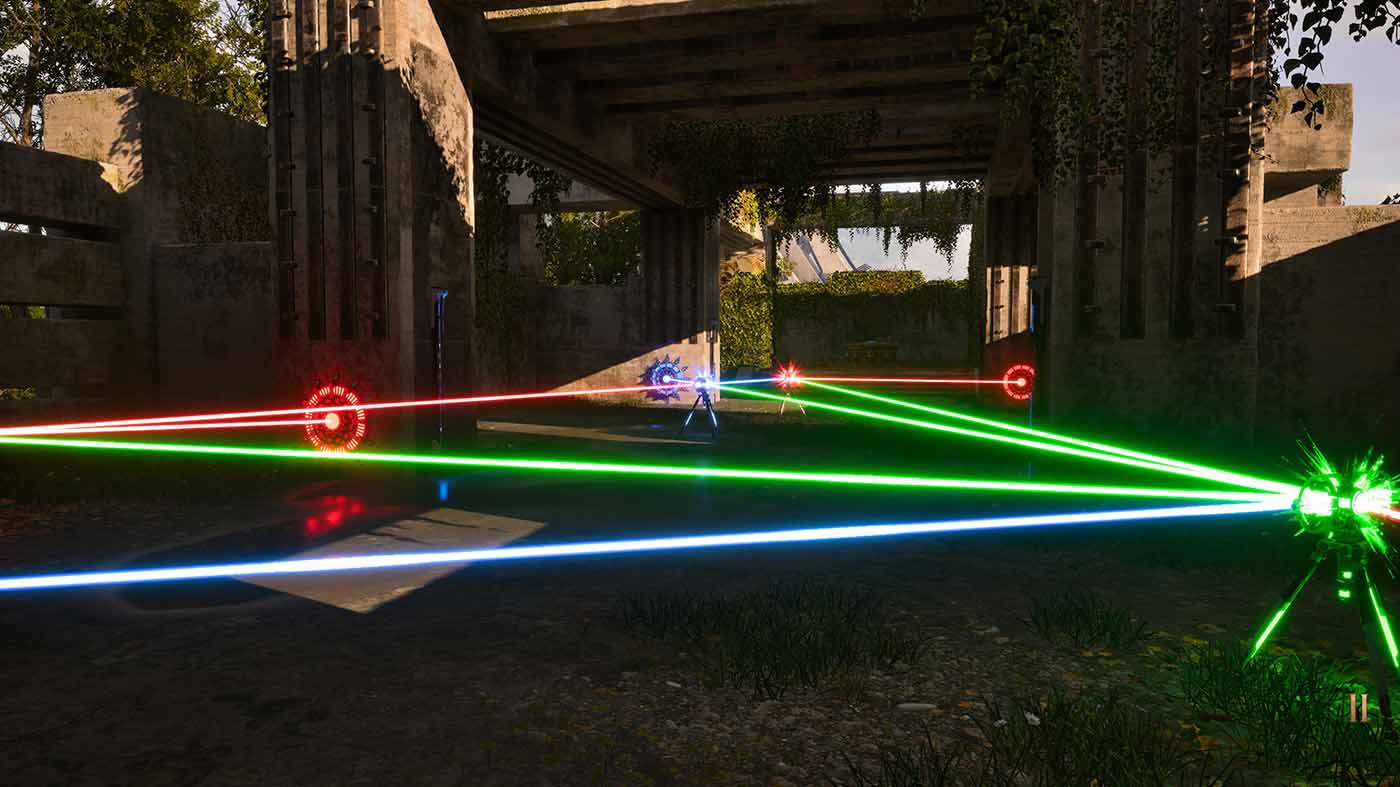
While pondering your own existence, you’ll also be asked to solve a series of increasingly brain-liquefying puzzles to further your expedition. Contained puzzle rooms are spread out across several open areas, allowing you to complete them in any order, giving you the freedom to take a step away from any frustration and loop back once you’ve had time to decompress. Better still, each puzzle room is numbered, named, and clearly signposted, ensuring that you won’t get lost in the beautiful environment, while also giving you an accessible way to search for a solution using a walkthrough if a particular challenge breaks you.
The puzzles themselves are exceptionally well designed, creating a satisfying loop that begins with head scratching, brow furrowing and exclamations of “this is impossible,” and ends with a moment of clarity and a feeling of foolishness that the obvious solution didn’t hit you sooner.
Your task is simply to reach a terminal that will add to the larger narrative tapestry, however, a series of forcefields, walls and other immoveable obstacles stand in your way. Luckily, you’re provided with a staggering number of tools to aid you in your efforts. Early puzzles will see you using laser-directing connectors to guide multi-coloured beams to corresponding receivers, boxes to activate pressure plates, and drills to open portals on solid objects. As you progress, the tools become more elaborate, such as teleportation pads and android shells you can project your consciousness into.
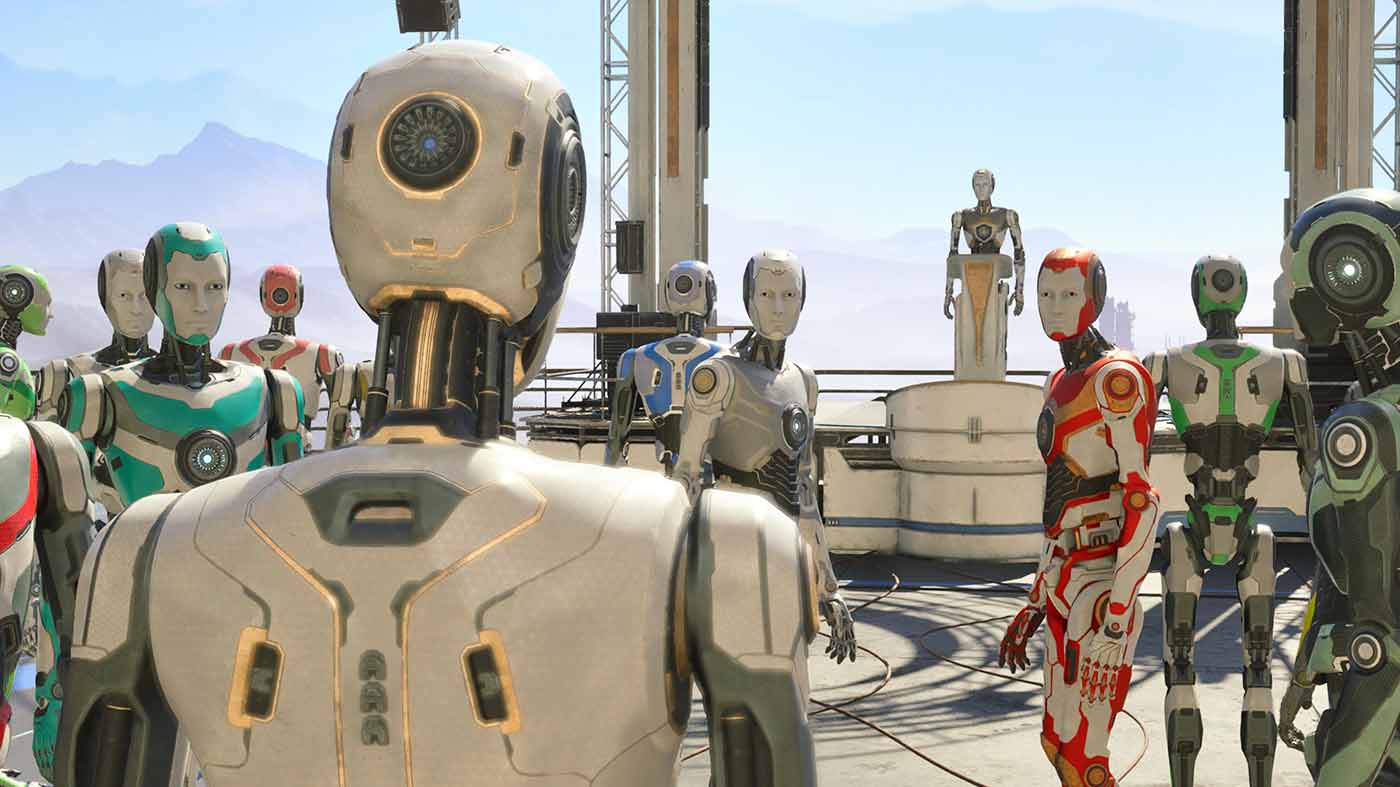
Each of these implements is introduced gradually, with their initial puzzle being fairly rudimentary, but it doesn’t take long for more complex scenarios to materialise. The true tests are found when these separate mechanics overlap, forcing you to think two, three or four steps ahead, all while considering which tools may work in tandem and which will clash. The pacing is largely perfect, with the recommended path giving you a gradual increase in difficulty in each area, although the penultimate location does come with a violent spike, only to plateau back out for the finale.
In the pursuit of uncovering the megastructure’s secrets, you and your bionic buddies will venture to four unique biomes, each containing three explorable areas. The scenery is consistently beautiful, as you begin in a lush, green archipelago filled with forests, before moving through snowy mountain tops and sweeping deserts. Each area contains eight mandatory puzzles, two optional, a handful of terminals, filled with lore-deepening logs and philosophical teachings, and various hidden collectables.
One such collectable is the Prometheus Spark, which can be used at the entry to any puzzle to instantaneously complete it without any harm done to your brain or schedule. You can revisit these sites at any time if your pride gets the better of you, but having the option to bypass troublesome challenges is a welcome one.
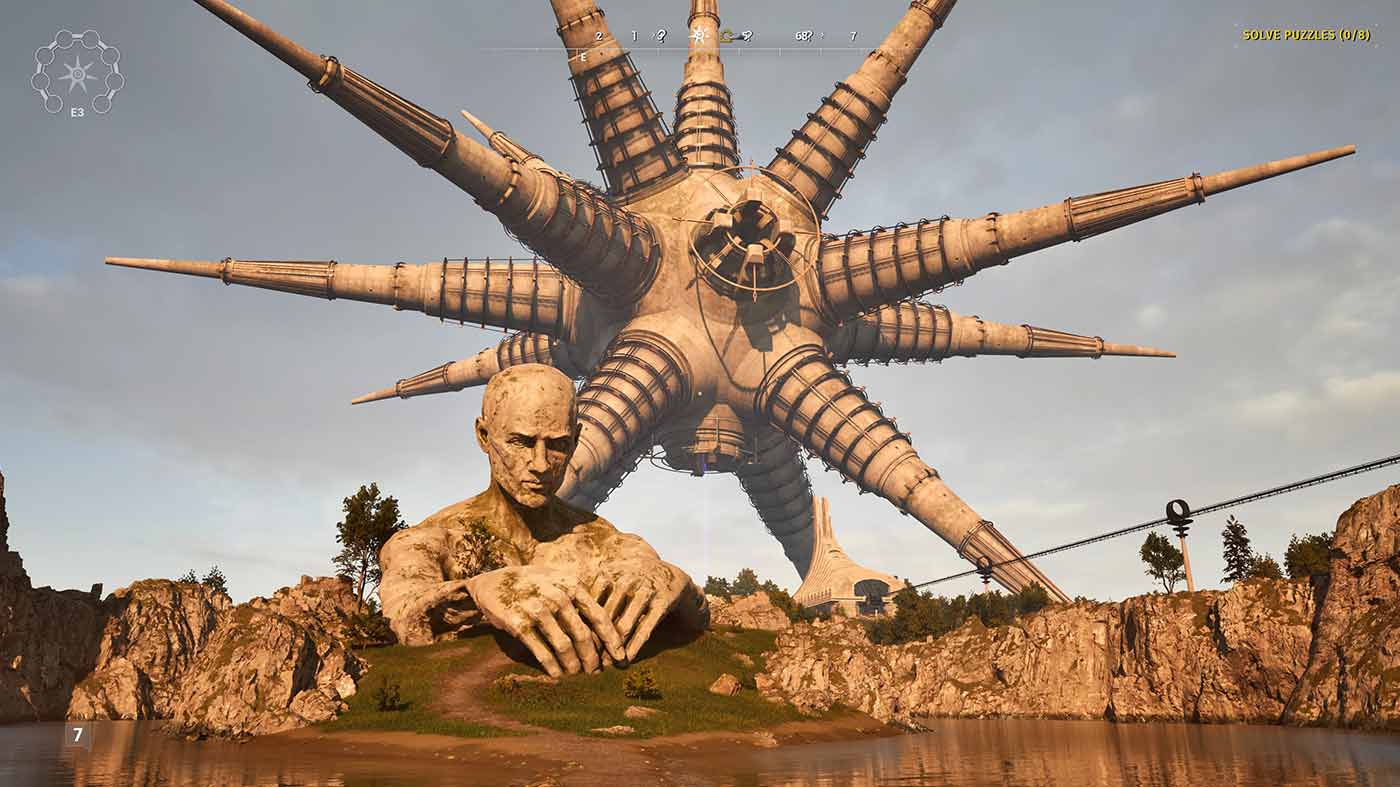
Completing each of the eight mandatory puzzles in an area will unlock a central tower, wherein you interact with one of the beings native to the island, philosophising with them and slowly unveiling the overarching narrative. To reach these towers, you first need to construct a bridge using tetrominoes, not unlike the puzzles found in the first game. The thought-provoking conversation at the other end of the chasm is a suitable prize, and the bridges make up a tiny percentage of the overall puzzles in the game, but I found them to be fiddly and uninspired.
Puzzle games are difficult by nature, it’s arguably the main reason someone would seek them out, but with challenge can come frustration, so it’s refreshing that The Talos Principle II respects your time and sands down a few nagging genre edges to make for a smooth experience. Placing tools on pressure pads is made easy as they snap into place, jumping over obstacles is simplified by highlighted footprints letting you know exactly where you’ll land and huge, flashing numbers at the entrance of every puzzle room guarantee you won’t get lost or turned around. Having such a player-focused design made sure that whenever I put the control down it was because my mind needed a break, not because the game was fighting against me.


